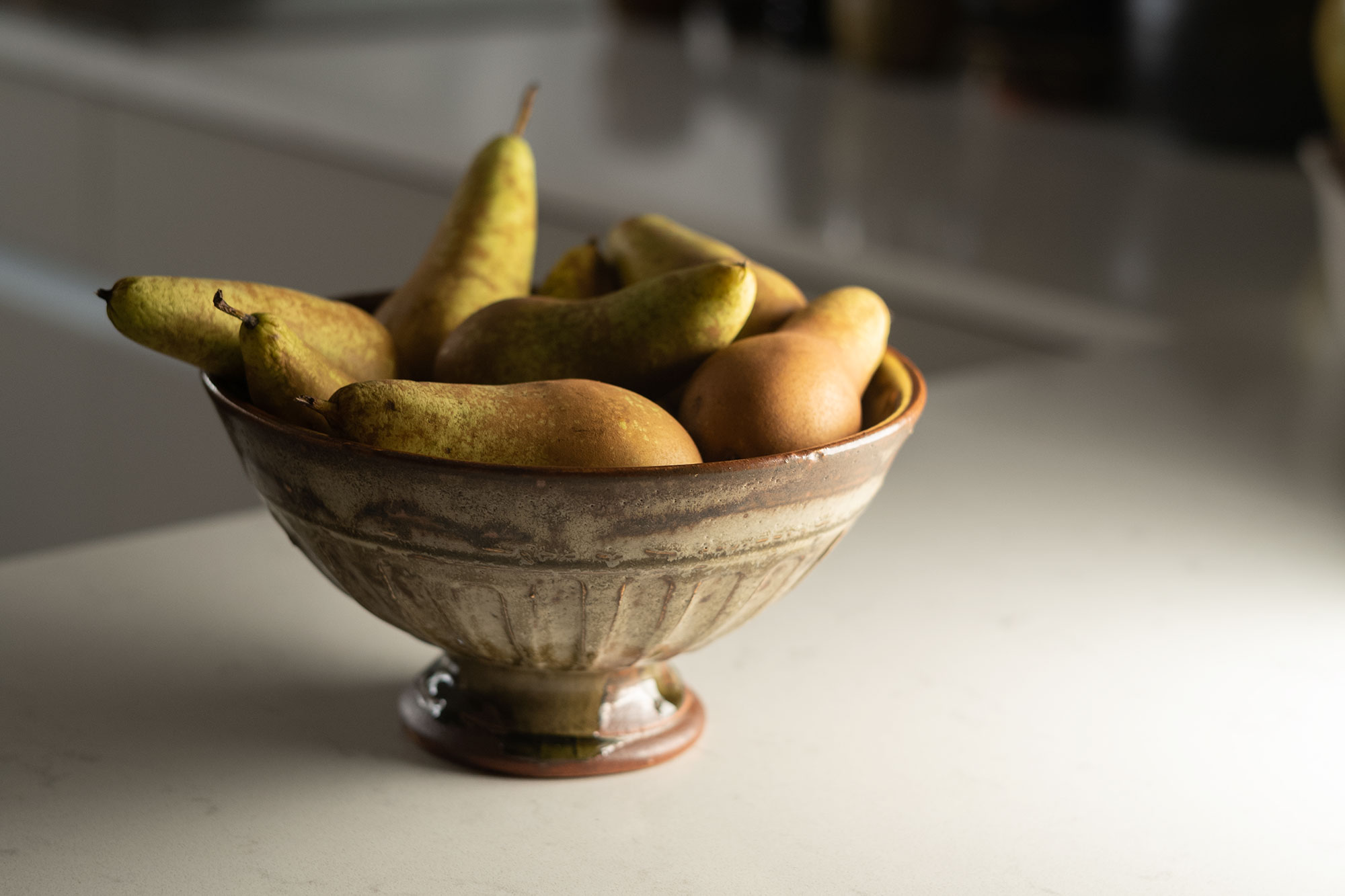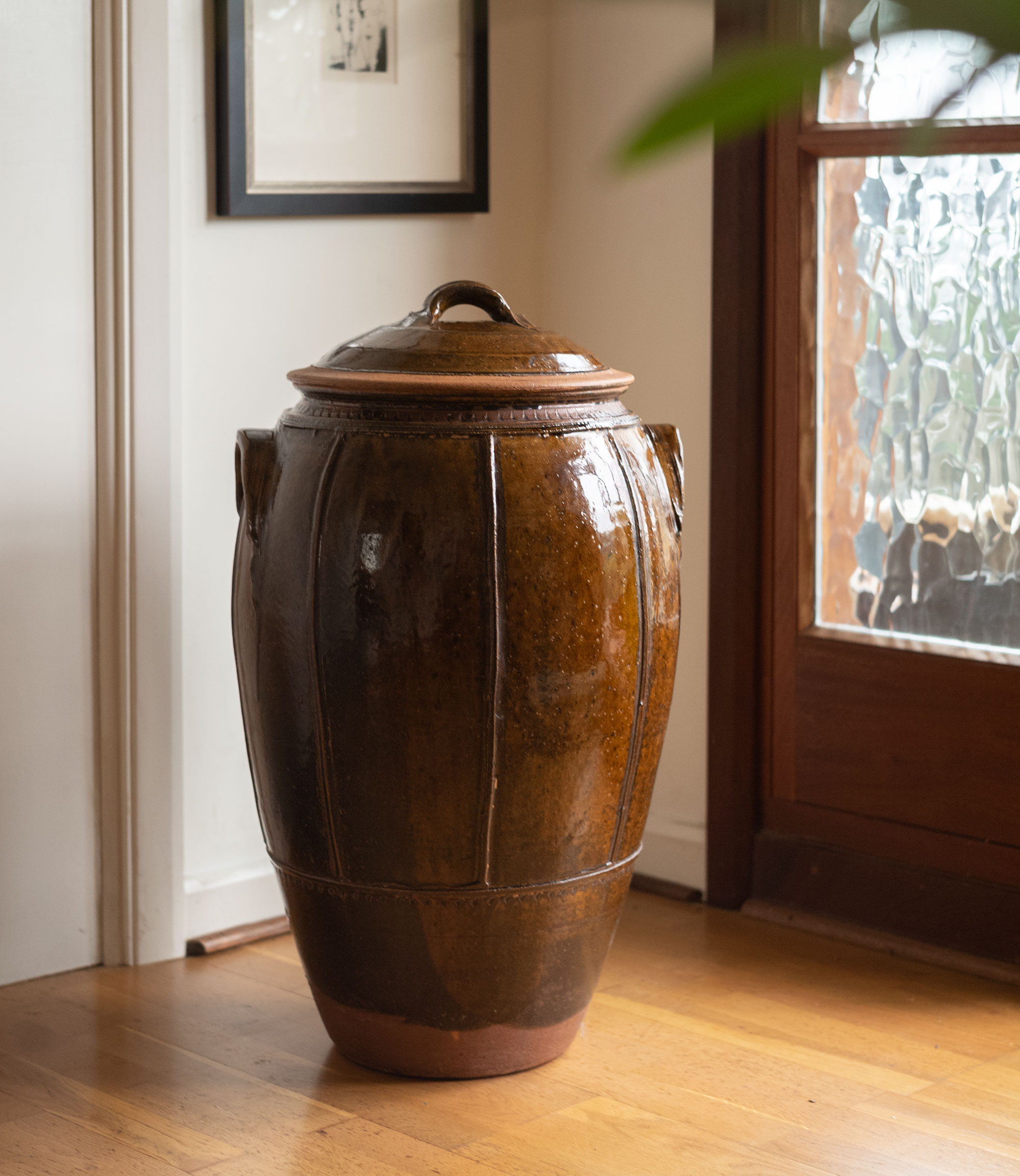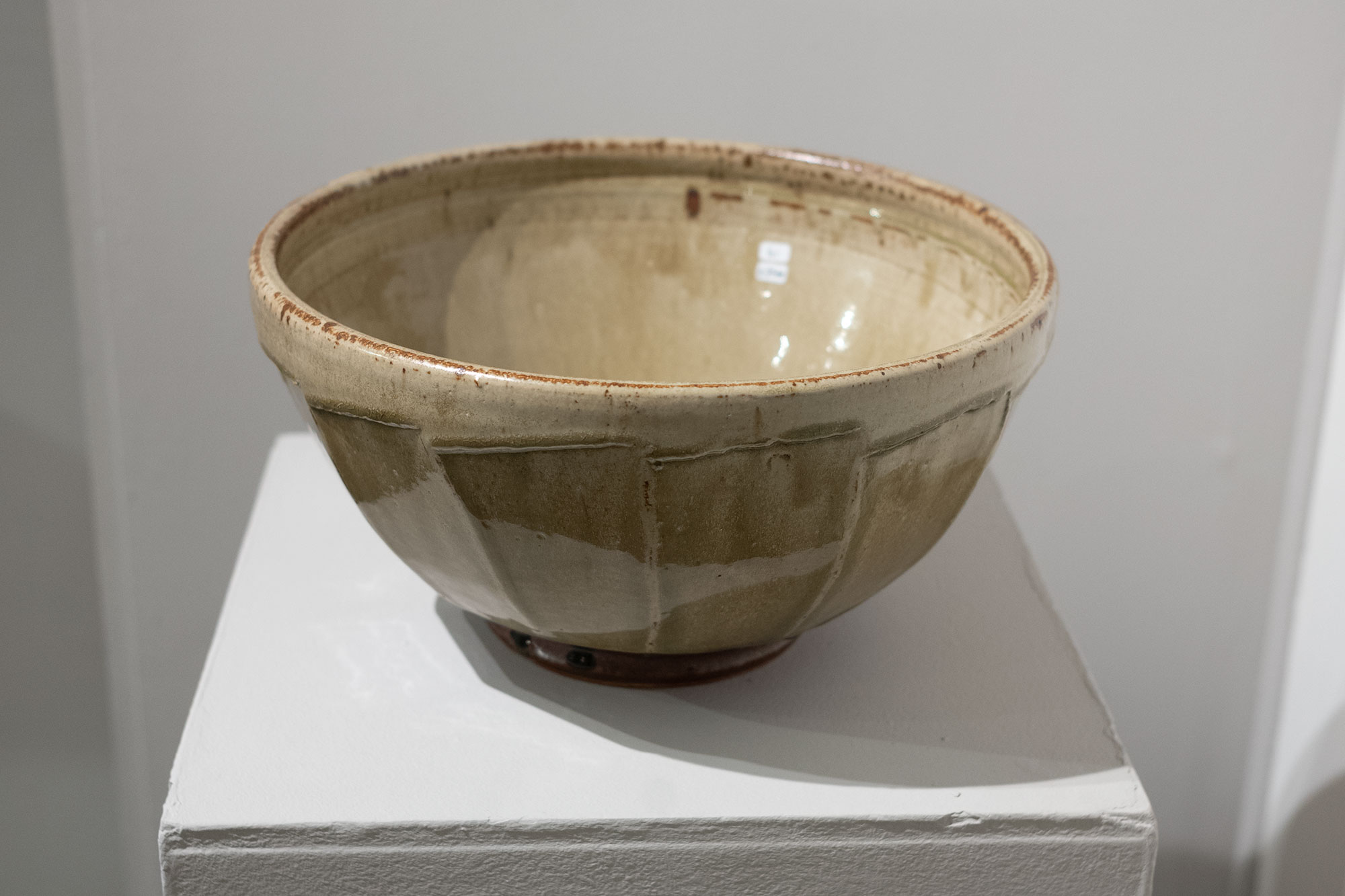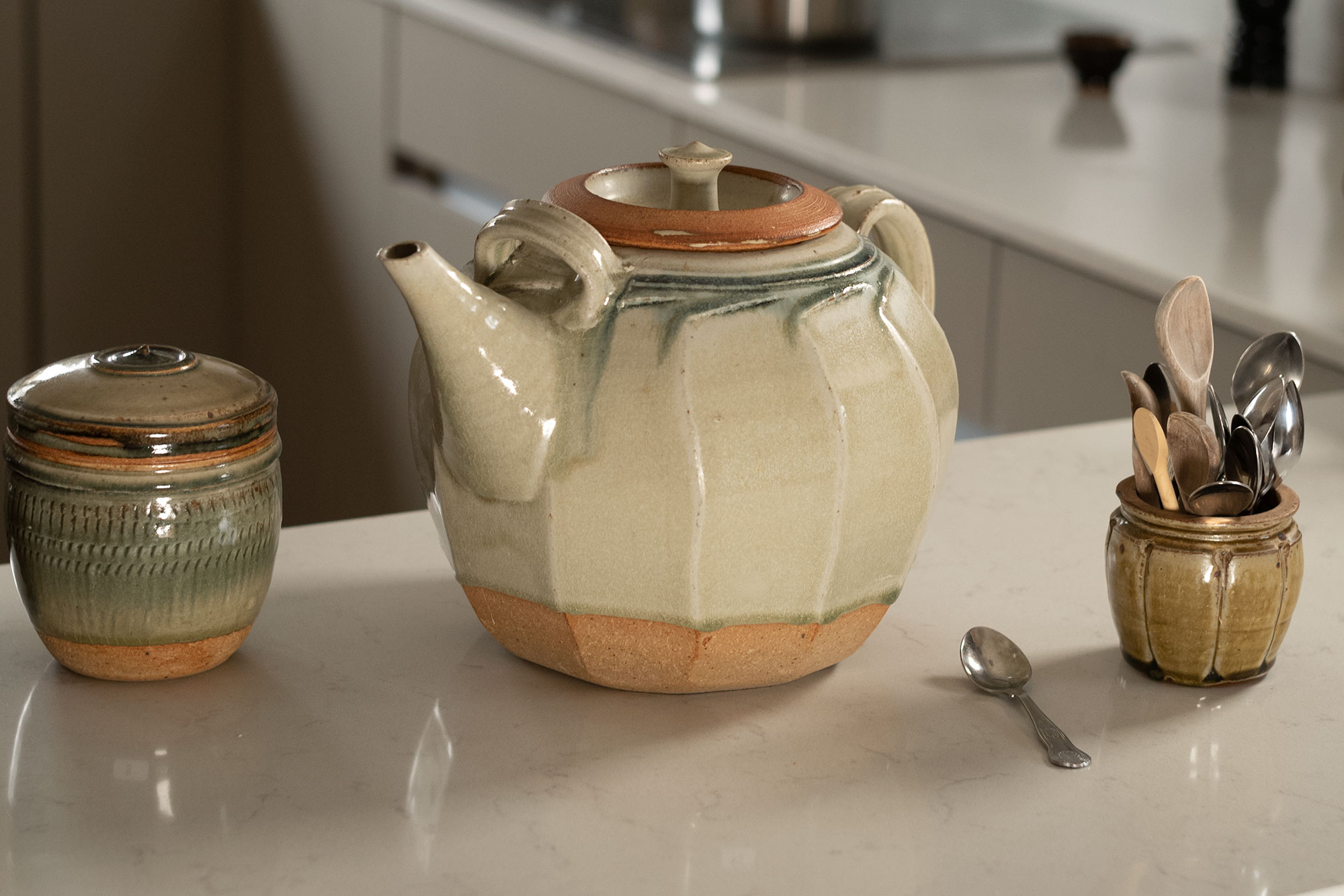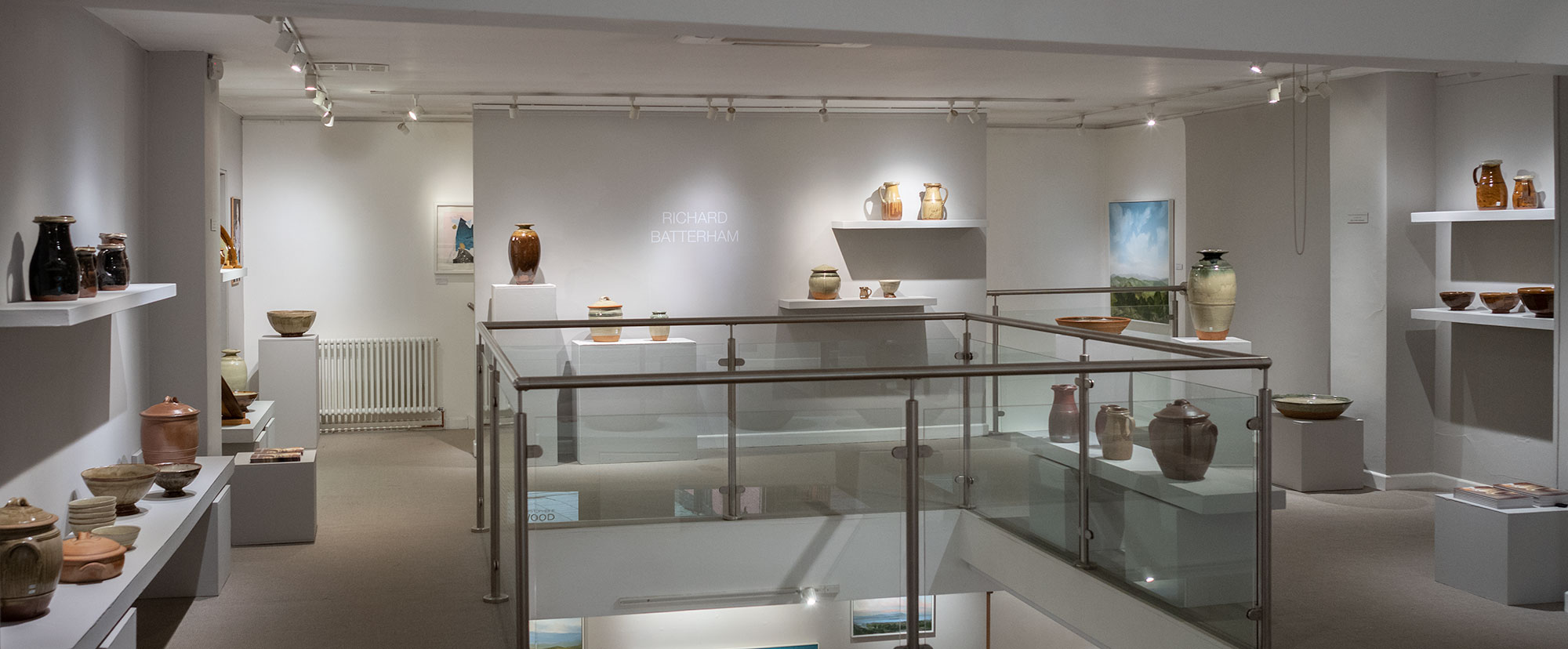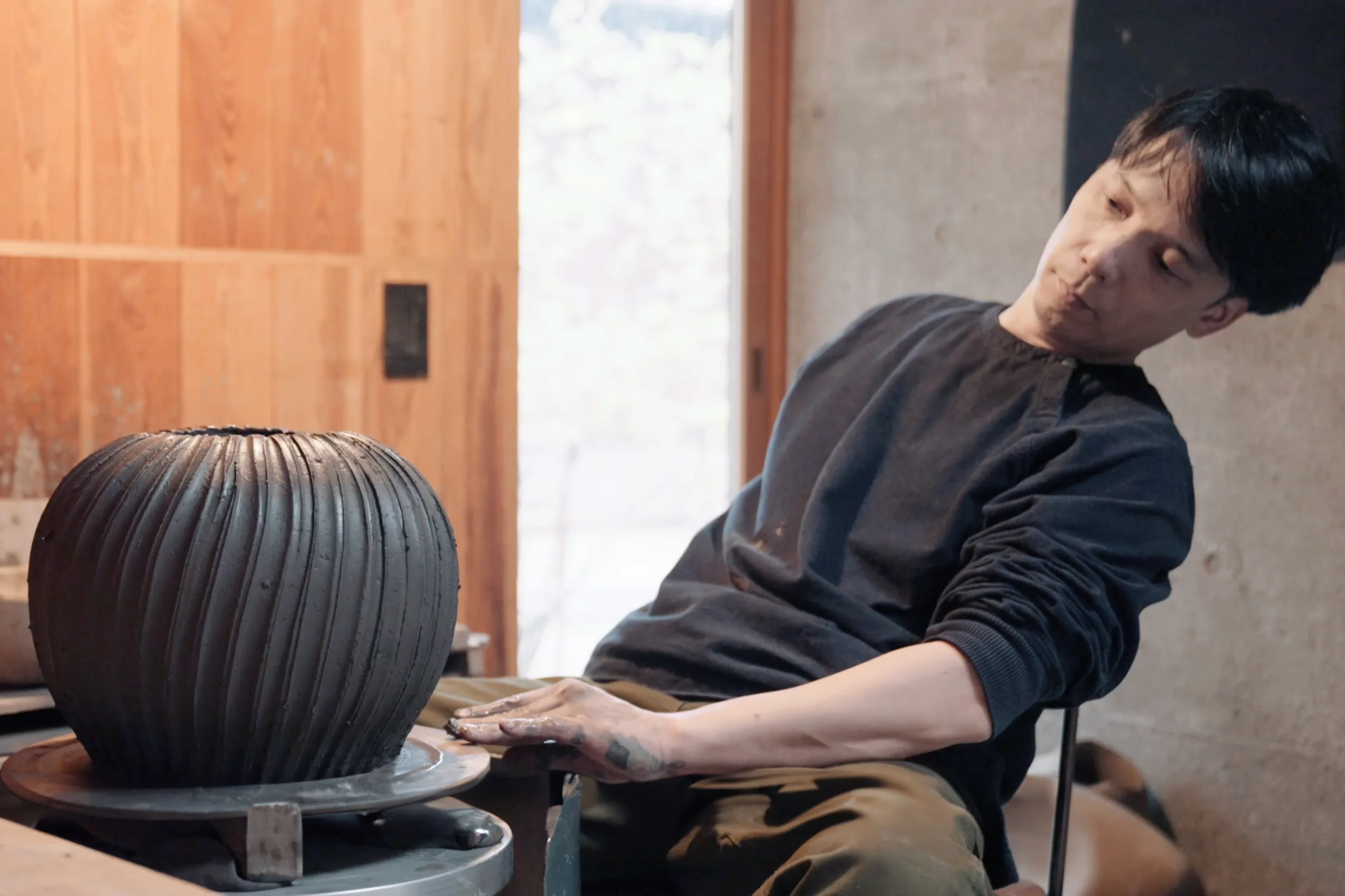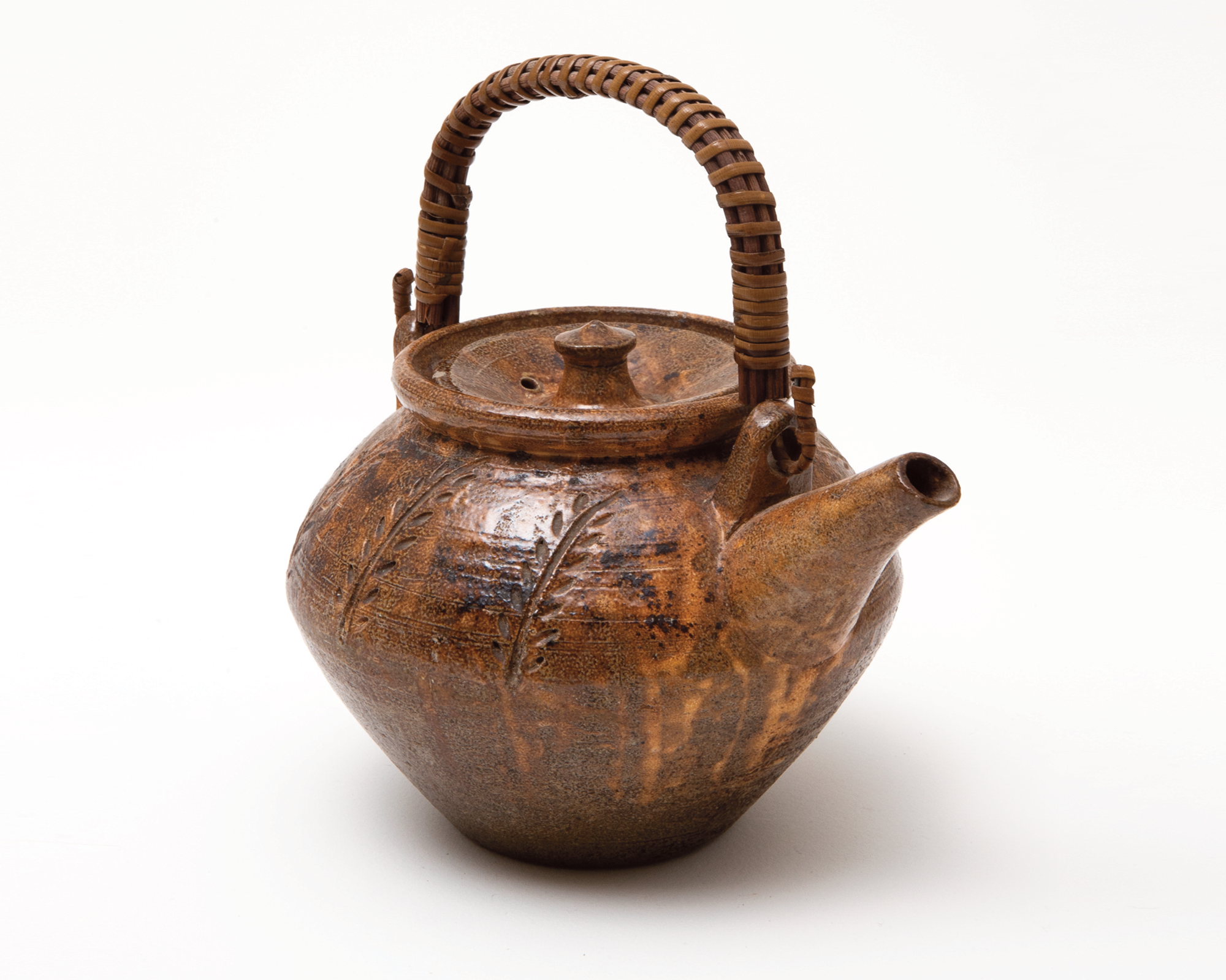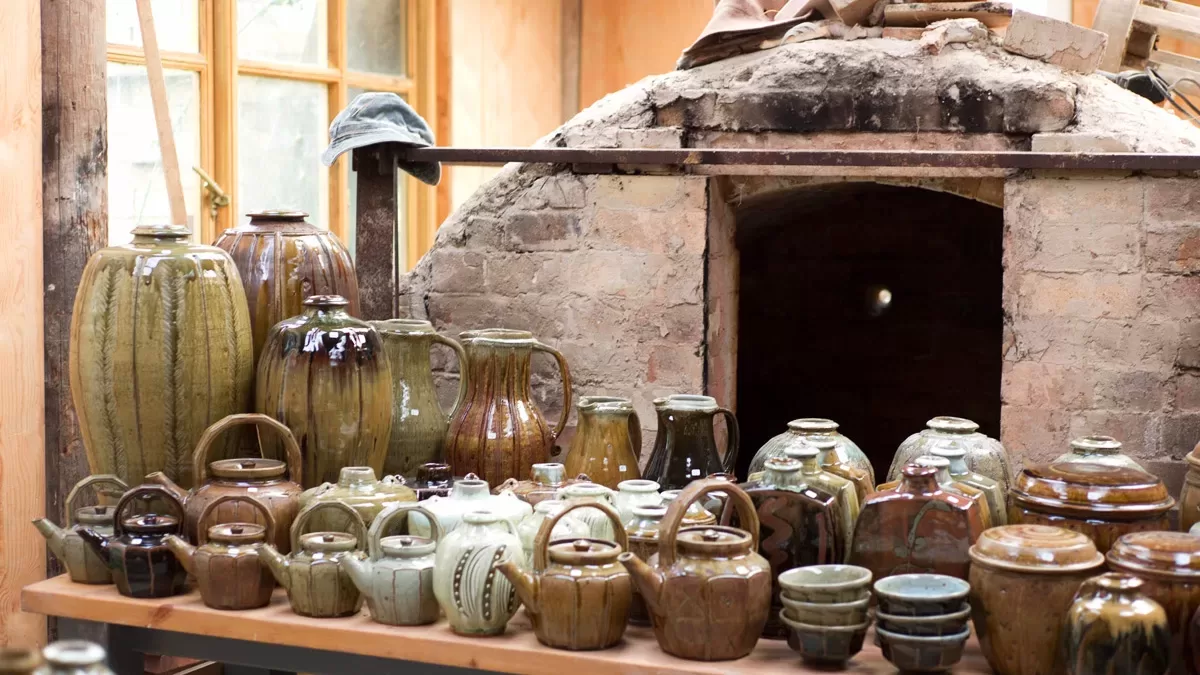Richard Batterham was an exceptional potter whose like only comes along very occasionally.
In 1981, Crafts magazine (No. 33) published an article by Richard Batterham, one of the few times he put pen to paper, at least as far as pottery is concerned. He wrote: ‘I am asked to write about my work, and am immediately reminded of the small boy who said that if he could explain what his picture was about, he need not have bothered to paint it. I am well aware of what happens when one lifts a plant and dissects it to see how it works; it dies.’
Sadly, Richard died in the autumn of 2021 aged 85. Nevertheless, we should celebrate the extraordinary contri-bution he has made through his serious, sensitive and skilful dedication to handmade pottery over the last 60 years.
Instrumental in Richard’s early development were a couple of important influences. At Bryanston School in Dorset he was introduced to pottery by Donald Potter, who taught sculpture, metalwork and pottery at the school. Don, as he was affectionately known, had worked with the artist and letterer Eric Gill and briefly with Ray Finch at Winchcombe to pick up the basic skills he would need for teaching. Don had a wonderful eye, an uncomplicated and unfussy sense of beauty, and a strong, honest sense of sculptural form which awakened and inspired Richard’s own sense of ‘rightness’. Even at school there was already evident an ease, directness and strength about his throwing which I was to discover when I found myself at the same establishment seven years later. After school he entered National Service and then almost immediately started an apprenticeship at the Leach Pottery, St. Ives, Cornwall. There he met Dinah Dunn, who was later to become his wife. She helped nurse Richard through a nasty and prolonged bout of jaundice contracted from eating contaminated mussels collected from the neighbouring bays.
His second major influence, Richard informed me, was Atsuya Hamada, the son of the great Japanese potter, Shoji Hamada. Atsuya happened to be at the Leach pottery at the same time and his sensitive, natural and unforced way with clay made a lasting impression. This is perhaps reflected in Richard’s own words: ‘The main work is not so much to make pots, but to allow them to grow, allow them to be alive and to communicate warmth and life in that uncannily direct and undemanding way that true and naked work can, vulnerable as it is. To make that possible I feel that it is necessary to use our skills and materials with humility and respect. This requires a certain quietness of living which is too easily knocked awry by the strains and demands which are put upon us by the extensive use of mechanical energy.’
Over the last 20 years, I visited Richard maybe 3 or 4 times a year. Before that very occasionally, as I lived too far away. He was encouraging and generous in his advice. He always seemed relaxed and unhurried and often I noticed a small piece of clay playfully being manipulated in his hands, mostly unconsciously but at the same time alert to learning more about its qualities from feel alone. He insisted that the pots were not about him but should reflect a deeper aliveness ‘to enrich and not to decorate’. Instinctively he identified with those unknown craftsmen from the East or with the lovely and robust potters he admired from the English medieval era. They had no one to impress, no exhibitions to launch, no reputation to nurse. But they had their work, in which they could develop, unheeded, an inner relationship. A deepening of understanding of the subtleties of their materials and the intricate and delicate movements learnt through long hours at the wheel. The ‘I’ bowed in the making, and not at its final acclamation. And in keeping with this ethos, he chose not to sign or mark his pots, preferring that they should speak for themselves.
It’s all about choice, he would say. What you choose will define your work. Form, quality of surface, sensitivity of touch, appropriate use of clay and firing incidentals all contribute to a tactile language more visceral than conceptual, which will, it is hoped, quietly communicate through continual acquaintance and use.
Amongst the materials Richard used were local clays (as slips), ochre and a variety of wood ashes along with a feldspar (Cornish stone) to formulate his fine glazes, many of which, I think, became even more beautiful after he was forced to experiment with a few different feldspars after the quarry which dug Cornish stone was closed.
Finally, the pots were surrendered to the kiln and flame, reaching in the glaze firing approximately 1300C. When the three chambers were used, two for glaze and one for bisque, the firings could last up to 42 hours. Both Richard and Dinah fired the kiln in shifts. The kiln took five days to cool, during which time Richard would busy himself with various jobs necessary to be ready for the next making session, clearing up the studio, making up glazes that were running low and so on. During the unpacking he needed time to accept and digest and make notes on what the kiln had offered up. After all, Richard said, “Pots last a very long time and their making should not be rushed.”
On another visit about eight years ago I wanted to buy a large and stunning ribbed store jar clothed in a rich manganese glaze, the largest store jar in his range. Not many were made. When I first saw it, it was beyond my pocket, but on a later visit I was delighted to see that it still stood majestically in the corner of the showroom. I said I would like to buy it, but I got the feeling that he was reluctant to let it go, as, after a pause, he quietly said with a quizzical smile “Make your own!” Fortunately for me he agreed to the sale. This large jar is a tour de force, showing Richard’s extraordinary gifts as a thrower. It was made in four parts, five if you include the lid, on his lightweight Korean-style kick wheel which revolves around a central shaft cemented into the floor. It has a natural wobble, due to flex in the shaft, particularly with heavier pieces of clay. After 50 or so years of making I don’t have that level of skill, especially with larger pieces. Once asked why he used such a ‘primitive’ wheel, he replied with characteristic directness “all the best pots from the past were made on wheels such as this, why should I want any-thing else?”
For me, Richard was an exceptional potter whose like only comes along very occasionally. Rounded and unpretentious in his approach, he was constantly observing, learning and refining either the clay, the glazes or the way he made things. Unusual too in that his forms developed really very early, and instead of trying new forms he refined them subtly through the years. I once asked him why he stuck to the one jug form, for example, and he simply replied “it works, doesn’t it?” That’s not to say that new forms weren’t added to the range – they were – but they suggested themselves or grew unforced out of the working process. He would also take notice of what his customers told him. He started to add a coil just below the top of some of his store jars to help one grip it, as a customer had dropped and broken one. He listened and the coil became quietly and imperceptibly a practical but decorative feature.
Richard’s strong work ethic held a deep respect for potters from many cultures who gave us pots of unassuming and unselfconscious beauty and vitality. This lively and honest work speaks through the centuries and acts as a continual insistence to up our game, even if we usually fail. But as he says, there is no reason ‘to condemn ourselves to using dead utensils, and abandon the possibility of being able to use ones which may live with us, accompany us in our meals, and enrich our living.’
Anyone who visited the pottery will realise the work ethic that both Dinah and Richard were invested in. The workshop was always bursting with large numbers of pots unhurriedly made. It’s interesting that a reputation grew up about a certain aloofness that a few visitors to the pottery were noticing. We are going back about 30 years when I first heard of these complaints. I’m sure it would have come about because of their strong sense of respect for the working day. I heard of one person, for example, who turned up half an hour late for a prearranged appointment. Dinah, being rightly protective of Richard’s working hours, asked the visitor to rearrange the visit and next time to turn up as agreed. The inference being that you wouldn’t turn up late to see your bank manager or accountant.
If he could, Richard usually worked a good eight hour day and sometimes more if the pots demanded it, as well as growing most of the fruit and vegetables necessary for a growing family of five children.
He particularly enjoyed the making processes such as turning, the application of spouts and handles, and the rhythm of production throwing, an area in which he excelled, given the large number of boards full of pots always in evidence. His strong sense of form was such that few decorative techniques were employed, but the ones he chose were effective and sufficient to enhance the forms without detracting from them. He used faceting, fluting, ribbing, incising and chattering, a simple Korean technique where, at a certain angle, a bendy piece of strip metal placed against the leather hard pot ‘chattered’ – that is, flicked out – small triangular shaped pieces of clay, creating a repeat pattern where the slight fluidity of his ash glazes could pool. It’s a delightful technique which he applied to many of his pieces with great skill. Few others have mastered this technique so effectively, at least in Europe.
Richard never considered himself to be an ‘exhibition’ potter. However, when his reputation grew he was increasingly asked to exhibit, so over a period of a year or so he would put aside some particularly good examples of his range. I remember one exhibition he held at the old Crafts Centre, curated by Martina Margetts at the time. I took the train up from Cornwall. I was seriously impressed by the scale and range of work on show and how all the pots, whether large or small, seemed to resonate with an alive surety and confidence. And Richard, decked out in casual corduroy, was chatting affably and looking as he always did, engaged and relaxed.
In this show hosted by the Goldmark Gallery in Uppingham, Rutland, most of the pots are from my own collection gathered over the last 20 years. I bought them not only as pots to use and colour my everyday life, but also as teaching aids for my own work. Through handling and familiarity I found subtleties would emerge: the rightness of weight, the thickness and quality of the glaze, the softness of a rim, the turning of a foot, the balance of a handle or the excellent pouring of a delightfully faceted teapot and so on. I feel privileged to have known a mostly absent teacher. His generosity, always present in his work, shone through one of the many letters he wrote, ending with the words ‘kind firings’.
It was always my intention, from the first purchase, to one day sell the pots on and allow others to appreciate them. My share of exhibition sales will be given to a relatively unknown charity called The Wildlife For All Trust, who are trail blazing a new approach to wildlife conservation at their large Wilderness Reserve in South Africa. I know Richard worried little about what happened to his work once it left the studio – that was the buyer’s business. But I hope that he would have approved how, in this instance, his work is helping, admittedly in a small way, to restore habitat to many species of indigenous wildlife, some endangered – and for others to appreciate the richness of his lifelong commitment to pot making, an activity he so naturally loved.
Mike Dodd, 2022




